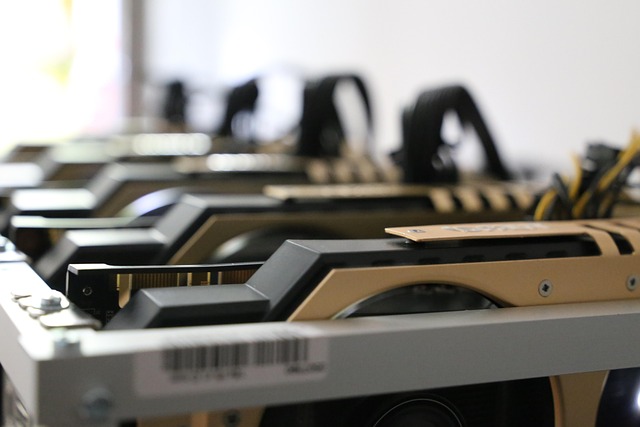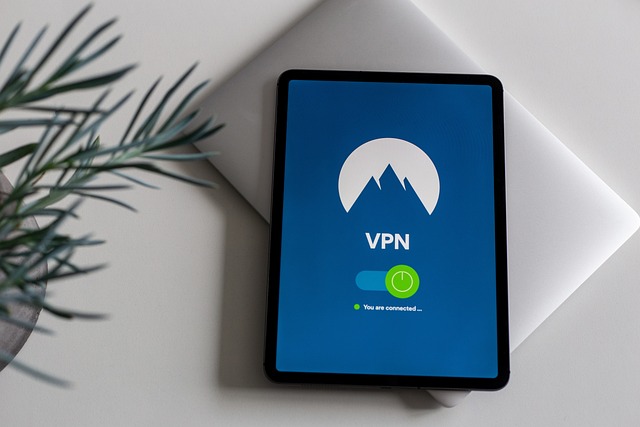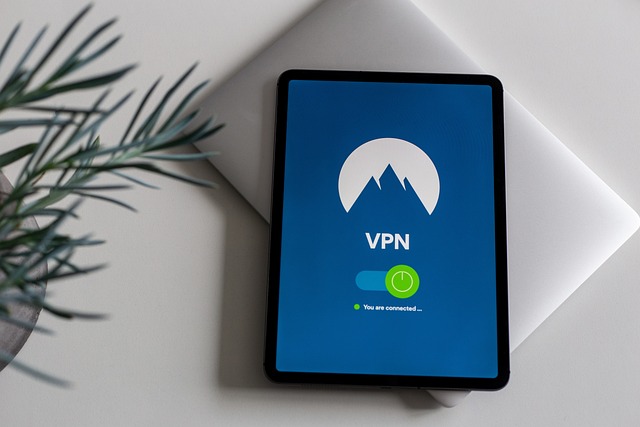What Is the Ethereum Network Used For: Practical Uses and Examples
Author: Jameson Richman Expert
Published On: 2025-11-14
Prepared by Jameson Richman and our team of experts with over a decade of experience in cryptocurrency and digital asset analysis. Learn more about us.
What is the ethereum network used for is a question many new crypto users and developers ask. This article explains Ethereum’s core purposes, real-world use cases, how it works under the hood, risks and security considerations, and practical steps to start using it. You’ll find actionable examples—smart contracts, dApps, DeFi, NFTs, staking and more—plus trusted resources and exchange links to help you get started safely.

Overview: Ethereum in one paragraph
Ethereum is a decentralized, programmable blockchain platform that enables developers to build and run applications (dApps) using smart contracts. Unlike Bitcoin, which was designed primarily as a digital currency, Ethereum provides a flexible execution environment—the Ethereum Virtual Machine (EVM)—that allows code to run in a tamper-resistant, verifiable manner. This flexibility powers decentralized finance (DeFi), non-fungible tokens (NFTs), decentralized autonomous organizations (DAOs), tokenization, and many enterprise solutions.
Quick reality check: Ethereum vs. Bitcoin
- Bitcoin – primarily a store of value and peer-to-peer money system (see Wikipedia on Bitcoin for more context).
- Ethereum – a general-purpose, programmable blockchain for smart contracts and decentralized applications (see the official Ethereum site for developer documentation).
For a foundational reference, see the Ethereum page on Wikipedia and the official Ethereum website at ethereum.org.
Core uses of the Ethereum network
1. Smart contracts: automated, trust-minimized agreements
Smart contracts are self-executing code stored on the blockchain. They automatically enforce rules and transactions when predefined conditions are met. Use cases include escrow services, automated payouts, token minting, and permissioned access.
Example: A smart contract can automatically release funds to a freelancer when a website’s tests pass, eliminating intermediaries and manual invoicing.
2. Decentralized Applications (dApps)
dApps are applications that run on Ethereum so the backend logic and state are decentralized. Popular categories include exchanges (Uniswap), lending platforms (Aave), and prediction markets.
dApps benefit from transparency (code and transactions are public), composability (protocols can integrate), and permissionless access (anyone can use or build on them).
3. Decentralized Finance (DeFi)
DeFi is a major use of Ethereum and includes lending/borrowing, decentralized exchanges (DEXes), yield farming, and stablecoins. DeFi protocols let users lend assets for interest, borrow against collateral, or swap tokens without centralized intermediaries.
Example: Using a DEX like Uniswap to swap tokens or providing liquidity to earn fees.
4. Non-Fungible Tokens (NFTs)
NFTs are unique tokens that represent ownership of a specific item—digital art, collectibles, music, or in-game assets. Ethereum’s ERC-721 and ERC-1155 token standards made NFTs popular and enabled marketplaces like OpenSea.
5. Tokenization and digital assets
Ethereum allows tokenization of real-world assets (real estate, equities, collectibles), fractional ownership, and programmable money via ERC-20 tokens. Tokenization can increase liquidity and open new business models for asset management.
6. Decentralized Autonomous Organizations (DAOs)
DAOs are organizations governed by code and token-holder voting. They enable collective decision-making and funding without traditional corporate hierarchies. DAOs can manage treasury funds, grant proposals, or protocol governance.
7. Identity, credentials, and supply chain
Ethereum can host decentralized identity systems, verifiable credentials, and supply-chain traces. Immutable records help with provenance, compliance, and auditability.
8. Gaming and metaverse
Blockchain-based games use Ethereum to create tradable in-game assets and interoperable economies. Players can truly own items and transfer them across games and marketplaces.
9. Oracles and real-world data
Oracles (like Chainlink) feed external data to smart contracts—price feeds, sports scores, weather data—enabling complex use cases such as derivatives, insurance, and automated payouts.

How the Ethereum network works (technical primer)
Accounts, transactions, and gas
Ethereum uses accounts and transactions. Every action (transfer, contract call, or contract deployment) consumes gas, a fee paid in ETH that compensates validators (or miners historically) for computation and prevents spam. Gas costs vary by operation complexity and network demand.
Ethereum Virtual Machine (EVM)
The EVM is the runtime environment where smart contracts execute. It ensures deterministic, sandboxed execution across all nodes so the same input always leads to the same output.
The Merge and Proof-of-Stake (PoS)
Ethereum transitioned from Proof-of-Work (PoW) to Proof-of-Stake (PoS) in "The Merge." Validators now stake ETH to secure the network, validate blocks, and earn rewards. PoS reduces energy consumption and supports scalable upgrade paths.
EIP-1559 and fee mechanics
EIP-1559 introduced a base fee that is burned and a priority tip that goes to validators. This mechanism introduced deflationary pressure on ETH supply during high activity while improving fee predictability.
Scaling: Layer 2 solutions and sidechains
Mainnet congestion and fees drove the growth of Layer 2 (L2) scaling solutions and sidechains. L2s process transactions off-chain or as compressed batches and settle on Ethereum mainnet for security.
- Rollups (Optimistic and zk-rollups) – compress multiple transactions and post proofs or batches to mainnet (examples: Optimism, Arbitrum, zkSync).
- Sidechains – independent chains that interact with Ethereum but have their own consensus (example: Polygon PoS).
- State channels and application-specific solutions
Layer 2s reduce per-transaction gas costs and improve throughput while inheriting Ethereum’s security model to varying degrees.
Practical examples and actionable steps
Example 1: Deploying a simple smart contract
- Write the contract in Solidity (for example, an ERC-20 token).
- Compile and test locally using Hardhat or Truffle.
- Deploy to a testnet (Goerli, Sepolia) to verify behavior.
- Once audited and tested, deploy to mainnet and verify on a block explorer like Etherscan.
Example 2: Interacting with DeFi
To use DeFi protocols:
- Set up a wallet (MetaMask or hardware wallet).
- Acquire ETH on an exchange and transfer to your wallet.
- Connect your wallet to a DEX or lending protocol and follow on-screen prompts—be mindful of gas fees and slippage.
Example 3: Minting and listing an NFT
Use an NFT platform like OpenSea or mint directly via a smart contract. Prepare media files, metadata, and set royalty preferences. Be aware of gas fees; consider minting on Layer 2 or lazy-minting approaches to reduce upfront costs.

Risks, security, and best practices
Ethereum unlocks many possibilities but comes with risks. Understanding these and applying best practices is critical.
Common risks
- Smart contract bugs – vulnerabilities can cause loss of funds. Use audits and formal verification when possible.
- Rug pulls and scams – malicious teams may abandon projects after raising funds. Verify teams, audits, and contract code.
- Market volatility – token values can swing dramatically; manage position sizes and risk tolerance.
- Regulatory risk – rules differ by jurisdiction and can affect tokens, exchanges, and services.
- Front-running and MEV – miners/validators or bots can reorder transactions for profit; some protocols implement protections.
For traders and derivative users, make sure to understand futures risks and margin mechanics; see a detailed guide on futures risks for 2025 here.
Security best practices
- Use hardware wallets (Ledger, Trezor) for significant holdings.
- Double-check contract addresses and approvals—use revoke tools when necessary.
- Test on testnets before mainnet deployment.
- Keep private keys and seed phrases offline and secure.
- Follow audits and community reviews for projects you use or invest in.
Economic incentives and staking
ETH is used as gas for transactions and as an economic incentive to secure the network. After The Merge, validators stake ETH to participate in consensus and earn rewards. Staking can be done:
- Solo staking – run a validator node (requires 32 ETH and operational expertise).
- Delegated or pooled staking – use staking services on exchanges or liquid staking protocols (you receive liquid tokens representing staked ETH).
If you’re interested in staking via centralized exchanges, reputable platforms with staking options include Binance (register on Binance), MEXC (register on MEXC), Bitget (register on Bitget), and Bybit (register on Bybit). Always confirm fees, lock-up periods, and custody risks before staking with an exchange.
Costs and fees: gas, priority tips, and optimizations
Gas fees depend on network demand and transaction complexity. Use the following strategies to manage costs:
- Execute transactions during off-peak hours when demand is lower.
- Use Layer 2 networks or sidechains for cheaper transfers and interactions.
- Bundle or batch operations when possible to save on per-transaction overhead.
- Use wallets and tools that estimate gas effectively; consider setting a reasonable max fee cap.

Regulatory and legal considerations
Regulations can affect token offerings, exchanges, and services. Comply with your local KYC/AML requirements and monitor regulatory updates. Institutional adoption may increase oversight and compliance needs for certain products (e.g., tokenized securities or custody services). For legal definitions and precedent, consult official regulators and legal resources in your jurisdiction.
Common confusions and misconceptions
“Ethereum” is often misheard as “ethernet” (network cabling). Don’t confuse the physical Ethernet network with the Ethereum blockchain—if you want a lighthearted read about Ethernet signal strength (network cabling) you can see a guide here. For everything blockchain-related, stick to Ethereum-focused documentation and developer guides.
Trading, investing, and predictions
If you’re trading ETH or tokens on Ethereum, educate yourself on trading strategies, price drivers, and technical fundamentals. For beginner-friendly guides on Bitcoin trading mechanics and trading basics that often apply to ETH markets as well, see this Bitcoin trading guide here.
Price predictions are inherently speculative. For frameworks on making informed projections, risk management, and avoiding common pitfalls, consult detailed price prediction resources such as this guide here.

Advanced topics: MEV, composability, and permissionless innovation
Maximal Extractable Value (MEV) refers to profits that validators or miners can capture by reordering or including transactions strategically. Protocols and research efforts are ongoing to mitigate harmful MEV behaviors. Composability—the ability for protocols to interact and combine—creates powerful innovation but also complex systemic risk (e.g., cascading liquidations).
Education, community, and staying current
Ethereum’s ecosystem evolves quickly. Follow official sources and community channels:
- Ethereum Foundation blog and developer docs: ethereum.org
- Protocol-specific docs (Uniswap, Aave, Optimism, Arbitrum)
- Block explorers like Etherscan for transaction transparency
- Research and security firms, and community audits
Further reading and related resources
- Beginner crypto trading strategy resources: crypto day trading strategies.
- Risks of derivatives and advanced instruments: futures trading risk guide.
- How Bitcoin trading works (useful concepts that cross-apply to ETH trading): Bitcoin trading guide.
- Price prediction frameworks and considerations: price prediction guide.
- Don’t confuse Ethereum with Ethernet; a non-blockchain networking guide is available: Ethernet signal strength explained.

How to start using Ethereum right now (step-by-step)
- Set up a wallet: Install MetaMask or get a hardware wallet for larger holdings.
- Buy ETH: Purchase ETH on a reputable exchange. You can register on platforms such as Binance, MEXC, Bitget, or Bybit.
- Transfer to your wallet: Send ETH from the exchange to your wallet address for direct control.
- Practice on testnet: Use Goerli or Sepolia testnet to interact with contracts without risking real funds.
- Use dApps carefully: Verify smart contract addresses, set small transaction amounts initially, and monitor gas fees.
Future outlook: where Ethereum is headed
Ethereum’s roadmap focuses on scaling, security, and sustainability. Layer 2 adoption, zk-rollups, sharding concepts (rollup-centric roadmap rather than classic sharding), and developer tooling improvements aim to lower costs and increase throughput. Institutional adoption and regulated products may grow as custody, compliance, and settlement use cases mature.
Summary: answering "what is the ethereum network used for"
The Ethereum network is used for building and running decentralized applications, executing smart contracts, enabling decentralized finance (DeFi), creating and trading NFTs, tokenizing assets, coordinating DAOs, managing identities, powering blockchain games, and much more. It provides a programmable, trust-minimized environment that has become the backbone for a wide range of decentralized services.
Whether you’re a developer, investor, or curious newcomer, Ethereum’s mix of programmability and decentralized security opens many practical use cases—but always pair exploration with strong security practices and risk management. For additional practical trading and strategy reading, check out the broader resources on crypto trading and price prediction mentioned above.
Quick next steps
- If you want to hold or trade ETH, consider creating an account on a reputable exchange such as Binance, MEXC, Bitget, or Bybit.
- If you plan to build, start with the official Ethereum developer docs and testnets.
- For trading education and risk awareness, read the futures risks and strategy guides linked above.
If you’d like, I can provide a tailored checklist for safe onboarding (wallet setup, small first transactions, contract verification steps) or a developer cheat-sheet for deploying your first smart contract. Which would you prefer?